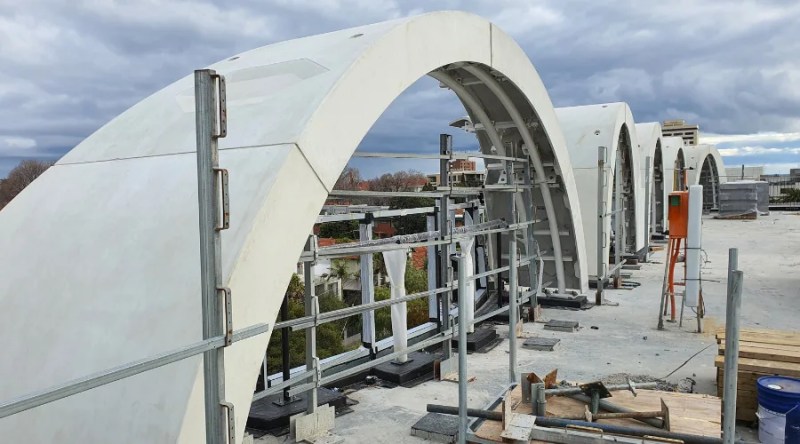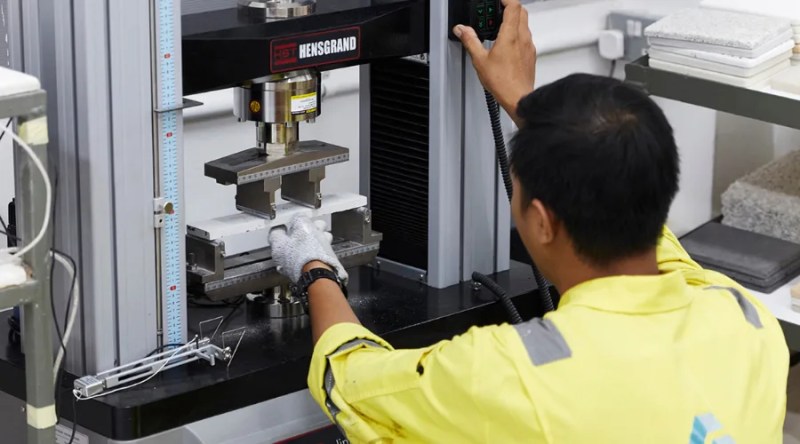In the world of design and construction, the role of a structural engineer in architecture is both critical and often invisible. While architects capture the imagination with inspiring forms, expressive façades, and sculptural spaces, it is the structural engineer who ensures these visions can stand tall, safe, and enduring. Every landmark project, from complex façades to monumental public works, is the result of a close partnership between design intent and structural integrity.
This article explores how structural engineers support architectural vision, the importance of collaboration, advances in materials that expand design possibilities, and real-world case studies that demonstrate the power of engineering in shaping architecture.
Challenging the Constraints of Form
The inherent compromise of vision is a familiar hurdle. A design conceived with fluid curves, deep articulation, or striking non-orthogonal surfaces frequently encounters resistance when confronted with traditional materials like precast concrete or unitised glazing systems. The resulting reality is often a diluted aesthetic, scaled back to satisfy established, easily quantifiable structural requirements.
Moving beyond standard rectilinear construction demands a structural methodology that acts as an enabler of form, not a restriction. The core problem is reconciling aesthetic ambition with the rigorous demands of compliance, particularly under Australian conditions, which impose strict standards for wind loading, seismic activity, fire performance, and long-term durability.
For visionary design to succeed, the structural engineer in architecture must transcend the role of compliance checker. They must become an integral early-stage design collaborator, employing advanced analysis and contemporary reinforced materials to ensure that complex, bespoke geometries are achieved while guaranteeing full structural integrity and performance certification.
Collaboration Between Architects and Structural Engineers
Great architecture is always the result of collaboration. The architect may imagine a cantilevered façade floating above a plaza, but it is the structural engineer who maps the load path, calculates stresses, and designs systems that make the vision achievable.
When architects and structural engineers work together from the early stages, projects benefit from:
- Design Freedom – Structural input allows architects to push boundaries safely.
- Material Efficiency – Reducing unnecessary bulk without compromising strength.
- Cost Control – Engineering optimisations lower construction costs.
- Construction Speed – Prefabrication and simplified connections streamline installation.
- Sustainability – Engineers help minimise embodied carbon through smart material selection and lightweight solutions.
For example, at Queens Domain in Melbourne, ShapeShift worked closely with structural engineers to develop a lightweight slab edge treatment using ShapeShell™ RT. The collaboration reduced slab thicknesses so significantly that an additional floor could be built within height restrictions. The engineering savings essentially paid for the entire balustrade system.
The Structural Engineer as Design Enabler
The most successful projects are defined by a vertical integration of design, engineering, and manufacturing. This approach positions the structural engineer in architecture at the conceptual phase, where their expertise is instrumental in selecting materials and detailing connections that support the intended aesthetic freedom.
The Paradigm Shift: Integrated Collaboration
Historically, the structural review occurred after the primary architectural design was complete. Today, complex projects necessitate concurrent engineering. When dealing with bespoke façade elements, planters, or large-format cladding, the early engagement of the structural engineer ensures that the chosen system—including the attachment methodology—is inherently sound and buildable, preventing costly redesigns late in the project timeline. This expertise, often backed by decades of experience and hundreds of successful projects across multiple continents, provides the confidence required to specify non-standard forms.
Material Innovation: The Reinforced Advantage
The shift away from conventional materials is driven by the limits of weight and mouldability. Advanced reinforced materials offer a pathway to achieving intricate geometry without incurring the weight penalties of traditional concrete or the fabrication limits of steel.
We specialise in proprietary reinforced material systems that outperform conventional options.
- ShapeShell™-RC (Reinforced Concrete Material): This is a lightweight, glass fibre reinforced concrete material. Its fibre reinforcement significantly increases tensile strength and durability, allowing it to be used as a thin-walled material, typically 15mm to 25mm thick. This reduced thickness translates to superior compressive strength and modulus of rupture compared to conventional concrete or granite. Crucially for the Australian market, a Green option is available that utilises recycled glass, resulting in a crystalline silica-free material. This innovation not only meets environmental safety goals but also improves mechanical properties. It achieves a material class of ‘Deemed Non-combustible’ to AS 1530.1.
- ShapeShell™-RT (Fibre Reinforced Thermoset Material): For ultra-lightweight and extremely complex forms, ShapeShell™-RT offers superior strength, boasting five times the strength of aluminium in some applications. It is a versatile and durable material, highly resistant to corrosion, weathering, and chemicals. Produced using advanced vacuum infusion techniques, the process ensures uniform consistency and enhanced performance across its form. It is easily customised for complex geometries and high-visibility architectural applications. The density can be as low as 5 to 32 Kg/m².
By engineering components using these high-performance substrates, the structural engineer in architecture can facilitate designs—from simple flat panels to the most complex 3D geometry—that were previously impractical or prohibitively expensive.
Optimising Buildability through Manufacturing Precision
The move to complex geometry necessitates manufacturing precision. We utilise advanced aerospace manufacturing techniques, including one of the largest 5-axis CNC machines in the Southern Hemisphere, to cut master moulds directly from 3D digital files. This process ensures dimensional accuracy and repeatability across large-scale projects, such as the unique, wave-inspired roof profile of the Pakenham Station canopy, which spans 8,400sqm using ShapeShell-RT. This precision is a structural requirement, not just an aesthetic one, ensuring that every panel fits within the predetermined structural envelope and tolerance limits.
Structural Engineering Test
When evaluating the structural integrity of building architecture, the tests conducted are comprehensive and fall into two main categories: Material and Component Testing (to verify the properties of the physical parts) and System and Compliance Testing (to verify the performance of the assembled structure under load).
These tests are crucial for meeting Australian Building Code (BCA) and Australian Standards (AS) requirements, particularly when using advanced reinforced materials and bespoke architectural elements.
1. Material and Component Testing (Laboratory & Factory)
These tests are performed on samples of the materials or actual fabricated components before they are installed to ensure they meet the engineer’s specifications.
A. Mechanical and Strength Testing
| Test Name | Purpose | Relevance to Architecture/Materials |
| Flexural/Bending Strength | Measures the material’s resistance to deformation and fracture under a bending load. | Essential for thin-walled elements like ShapeShell™-RC (reinforced concrete) and ShapeShell™-RT (fibre reinforced thermoset) where façade panels must withstand wind pressure and suction. |
| Compressive Strength | Measures the maximum load a material can withstand before failure under axial compression. | Critical for load-bearing elements and checking that the core material itself can support its weight and any applied loads. |
| Tensile Strength | Measures the resistance to breaking under tension (pulling apart). | Especially important for fibre-reinforced materials where the fibres provide significant tensile capacity, preventing cracking. |
| Modulus of Elasticity (Young’s Modulus) | Measures the material’s stiffness or its tendency to deform elastically when a force is applied. | Used in structural modelling (Finite Element Analysis) to accurately predict deflections under service loads. |
| Density/Weight | Measures the mass per unit volume. | Crucial for calculating the dead load on the primary structure and foundations, especially when specifying lightweight materials (e.g., ShapeShell™-RT starting at 5 Kg/m²). |
B. Durability and Composition Testing
| Test Name | Purpose | Relevance to Architecture/Materials |
| Water Absorption and Permeability | Measures how much water the material absorbs and how easily water can pass through it. | Verifies the material’s long-term performance and resistance to freeze-thaw cycles and weathering. |
| Chemical Resistance | Exposing the material to common environmental chemicals (e.g., pollutants, salts) to check for degradation. | Ensures the facade will not deteriorate from cleaning agents or environmental factors, maintaining durability. |
| Alkali Resistance | Specifically for GRC materials, checks that the glass fibres resist the high-alkaline cement environment over time. | Essential for ShapeShell™-RC products to guarantee long-term structural integrity. |
| Silica Analysis | Testing the material composition to verify the absence of harmful crystalline silica. | Meets modern health and safety standards for construction workers and demonstrates a commitment to sustainable, safer materials. |
2. System and Compliance Testing (Mock-up and On-Site)
These tests evaluate the performance of the assembled architectural system—the panel, the connections, and the sealant—under simulated real-world conditions. These are vital for gaining full structural certification for bespoke designs.
A. Façade and Envelope Performance Testing (Mock-ups)
These tests are often conducted on a full-scale mock-up of a critical facade section, as was required for the Orbis Apartment façade.
| Test Name | Australian Standard | Purpose |
| Air Leakage/Airtightness | AS/NZS 4284 | Measures the amount of air passing through the facade system under pressure and suction. |
| Water Penetration Resistance | AS/NZS 4284 | Measures the system’s ability to resist water ingress under simulated wind-driven rain conditions. |
| Structural Performance (Serviceability) | AS/NZS 1170.2 | Applies service wind loads to check for excessive deflections or permanent damage to the facade panels or the engineered attachment system. |
| Ultimate Structural Performance | AS/NZS 1170.2 | Applies extreme (cyclonic) wind loads to ensure the system does not collapse or fail structurally. |
| Impact Resistance | AS 4040.1 | Measures the facade’s ability to withstand soft-body (e.g., human) and hard-body (e.g., debris) impact, maintaining safety and integrity. |
B. Fire Safety and Compliance Testing
| Test Name | Australian Standard | Purpose |
| Non-Combustibility Test | AS 1530.1 | The critical test to determine if a material will not ignite or emit heat when subjected to high temperatures. Materials like ShapeShell™-RC are classified as ‘Deemed Non-combustible’. |
| Fire Spread and Flammability | AS 1530.3 | Assesses the heat and smoke release properties of a system where a non-combustible classification cannot be achieved. |
| Fire Resistance Level (FRL) | BCA/AS 1530.4 | Testing an assembled system (e.g., a wall) for its capacity to maintain stability, integrity, and insulation under fire conditions over a period of time. |
C. Structural System Verification (Engineering Analysis)
While not a physical test, this is the foundational verification process conducted by the structural engineer in architecture.
| Test Name | Engineering Methodology | Purpose |
| Finite Element Method (FEM) Analysis | Advanced numerical modelling (using software like Strand7 or Abaqus). | Simulates complex loading conditions (dynamic wind, seismic) on non-standard, bespoke geometries to predict stress distribution, deflection, and potential failure points before fabrication begins. |
| Connection Integrity Analysis | Hand calculations and FEM on connection points. | Verifies that the engineered fixing system (e.g., using Grade 316 stainless steel components) can handle the combined dead load of the panel, imposed loads (e.g., custom planters), and dynamic loads, while accommodating ±20mm site tolerances. |
| Thermal Movement Analysis | Mathematical modelling. | Calculates how much the panels and structure will expand and contract due to temperature changes, ensuring the joints and sealants can accommodate this movement without failing. |
Sustainability and Structural Engineering
The role of a structural engineer in architecture goes beyond strength—it extends to sustainability. The building industry is a major contributor to global carbon emissions, and engineers are uniquely positioned to address embodied carbon through material choice and structural optimisation.
- Lightweight solutions reduce the mass of buildings, lowering transport and installation energy.
- Reinforced alternatives like silica-free ShapeShell™ RC reduce harmful crystalline silica while improving strength.
- Lifecycle thinking ensures materials are designed for durability, reducing replacement cycles and waste.
Sustainability in architecture is not only about operational energy—it begins with how structures are engineered from the ground up.
The Future of Structural Engineering in Architecture
Emerging technologies are redefining the relationship between structural engineering and architecture:
- Digital Twins & BIM Integration – Real-time collaboration between architects and engineers streamlines decision-making and reduces errors.
- Parametric and Generative Design – Structural optimisation tools allow engineers to model thousands of variations, finding the most efficient forms.
- Advanced Materials – Nanotechnology, fibre-reinforced composites, and 3D-printed structures will continue to expand what is possible.
- Performance-Based Design – Engineers will increasingly design for resilience against climate change impacts, including higher wind loads and rising temperatures.
The future belongs to integrated teams where architects and engineers co-create, not just coordinate.
Building Vision with Structural Integrity
The presence of a structural engineer in architecture is essential to realising ambitious design. They are the quiet partners who balance aesthetics with physics, innovation with safety, and ambition with durability. By collaborating closely with architects and embracing advanced reinforced materials, structural engineers help translate vision into reality.
Architecture is art, but it is art that must stand. And it is through engineering structural integrity that architecture achieves its full potential—safe, enduring, and inspiring.









